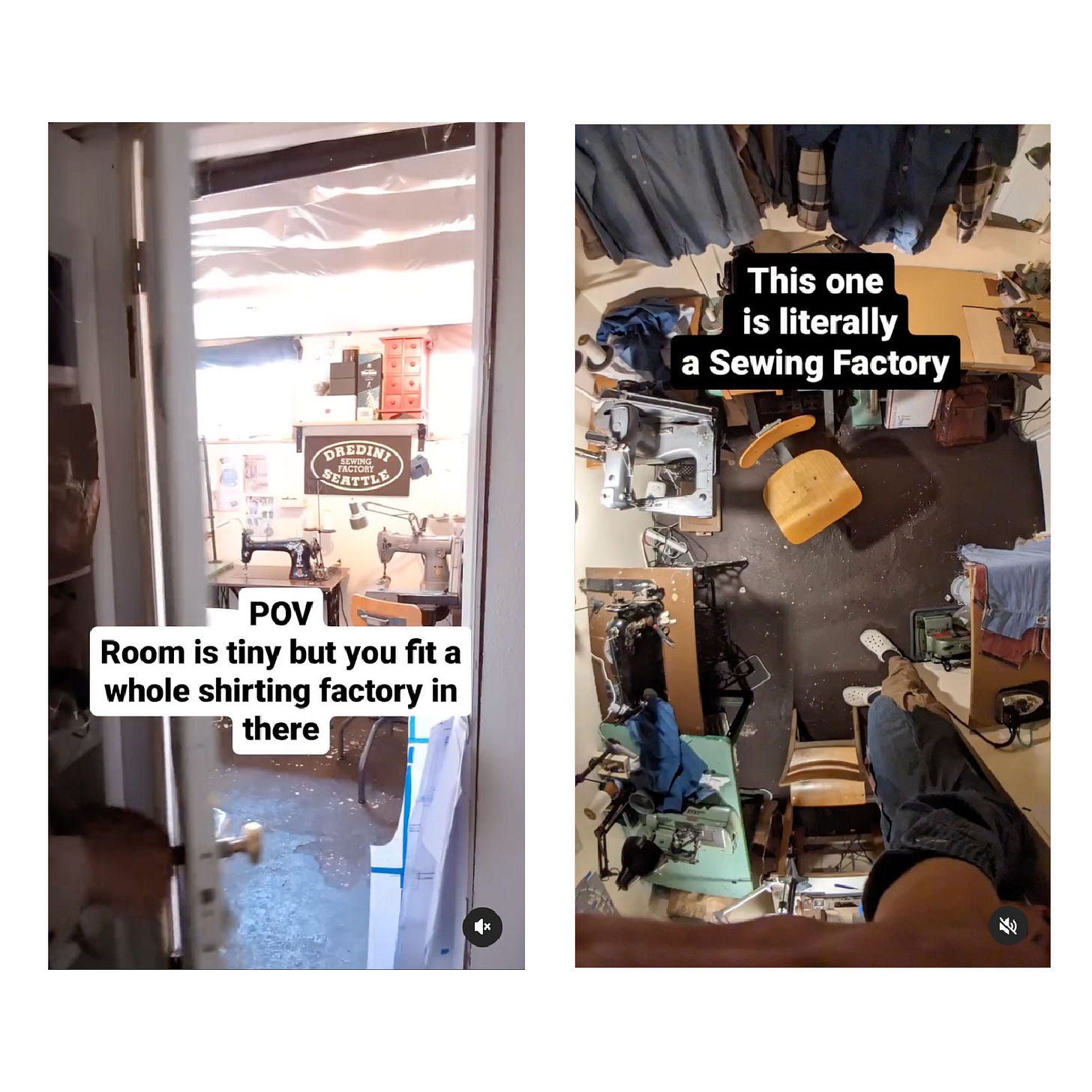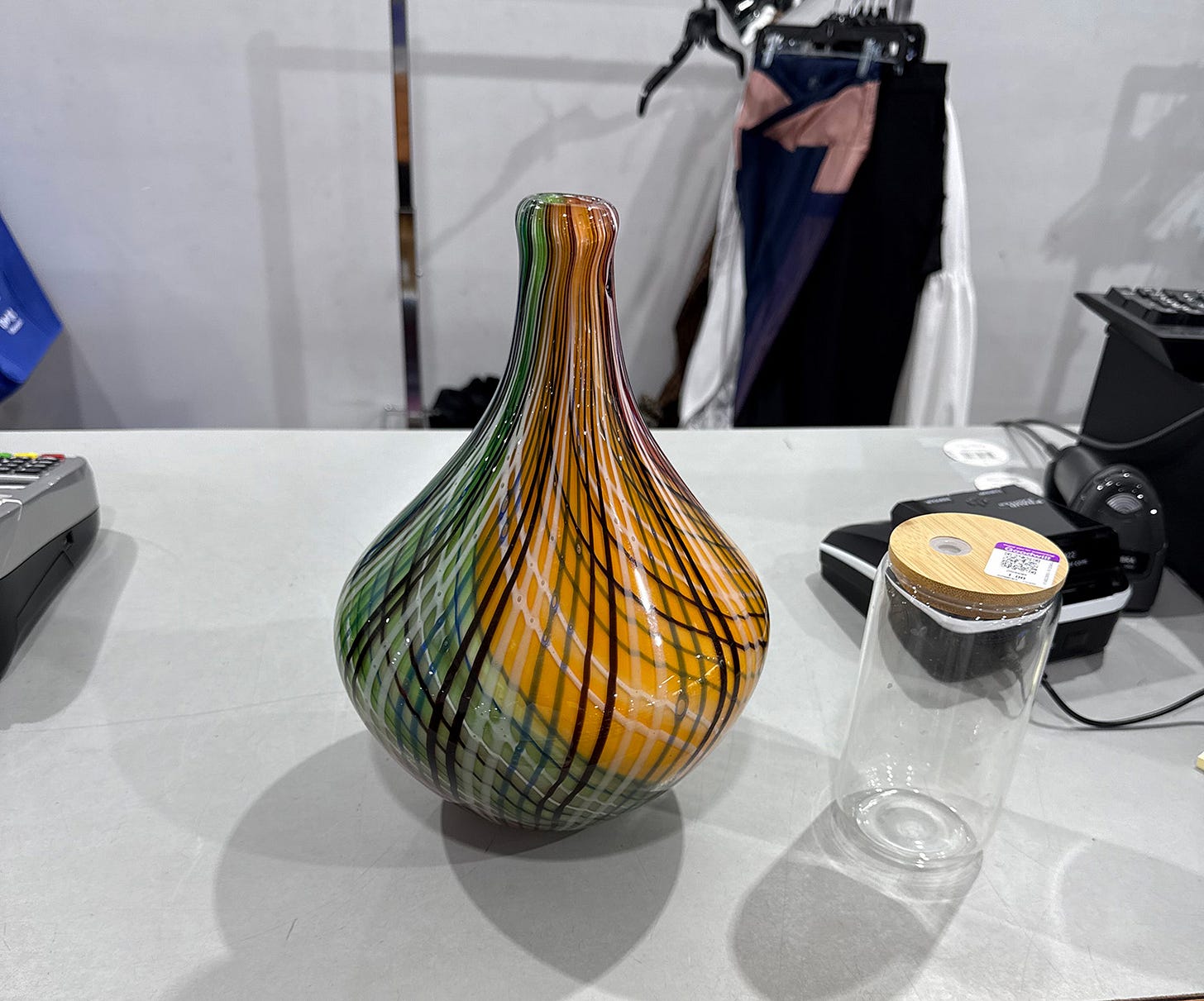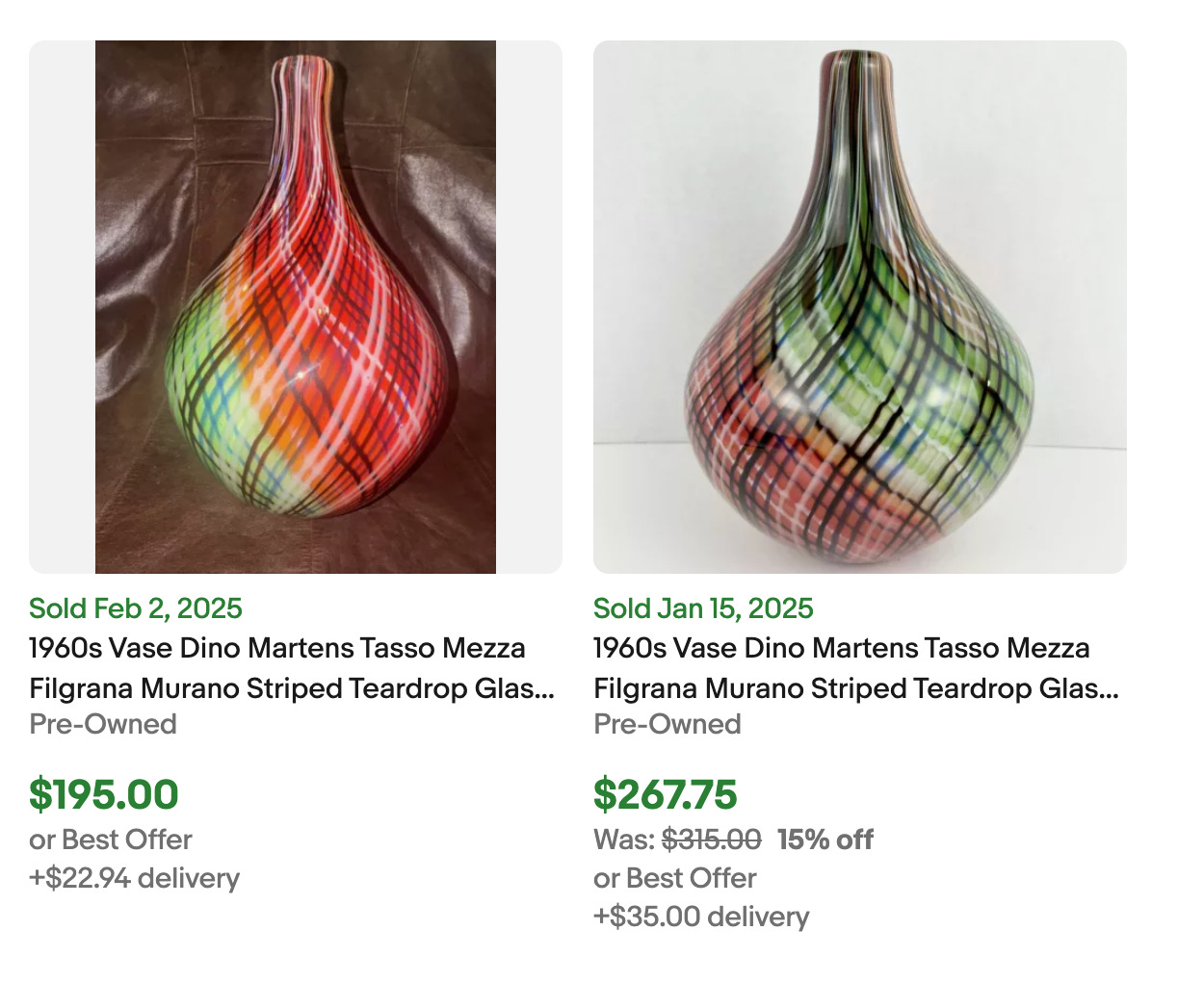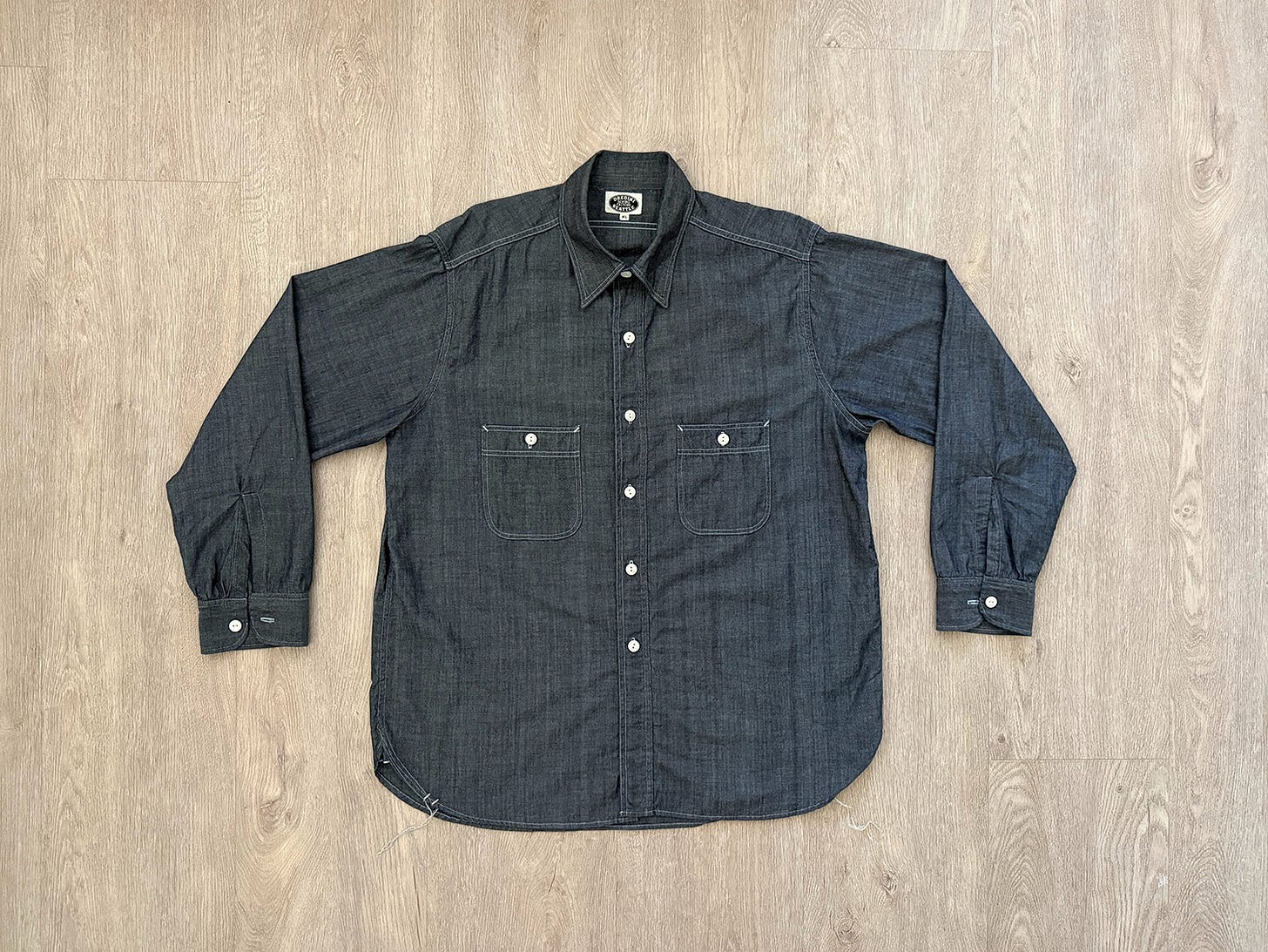Five Things 01
for Thursday, April 3, 2025
Art of Dancehall: Flyer and Poster Designs of Jamaican Dancehall Culture
If the title alone doesn’t tell you why I picked this book, nothing will. “The Art of Dancehall” is both a reference and a study of one of the most important aspects of club culture — the flyer. Promoting the scene sometimes meant standing outside rival clubs at closing time, handing out your flyer, trying to pull the crowd to your spot — all while fighting for the same audience as every other promoter in town.
“The Art of Dancehall” dives into the artwork, flyers, and posters that promoted the music. It was the visual language of the culture. Dancehall — Jamaica’s raw, unfiltered pulse — isn’t just a genre. It’s a cultural force, a street-born movement that came out of reggae but built its own lane. It’s handmade flyers Xeroxed at the corner shop, or printed on something better if you had the budget. It’s sound systems shaking open lots with bass so deep it makes your body move whether you want it to or not.
The culture didn’t stay put. It spread from Jamaica to London and New York City, where immigrant communities helped expand the reach — and the rhythm — of the sound.
Dancehall is not just music — it’s a lifestyle, a visual language, a statement.
Naturally, the book is by Walshy Fire, a steward not just of dancehall but of Caribbean music as a whole. A legend in the community, Walshy Fire has touched music and sound in countless ways. In his film “Give Me the Future” with Diplo and Ape Drums, he says, “The main mission [is to] make the world smaller by making the party bigger.” That line stuck with me. Make the world smaller. Feels like a mission statement.
His take on “The Art of Dancehall” feels like a project that was made for him — though it wasn’t easy to pull off. Flyers aren’t meant to be saved. But thanks to a global network of collectors and artists, the archive came together.
“The Art of Dancehall” is published by Rizzoli and available at now.
Programming Note
Next Thursday, I’m sitting down with Walshy Fire to go deeper into the book. As a fan of ephemera, books, and music, I’m genuinely excited for this one.
Lowland Andes Pants
Miami and long legwear don’t go together. Pants, sweatpants, and jeans are temporary garments — the kind you wear out the door and peel off the moment you get home. It’s a linen-pants/shorts city, through and through. But I’ve never really liked linen — I’m not drawn to it. Maybe it’s a weight thing; I haven’t quite been able to pin it down.
What does work is technical gear that is purpose built for hot conditions. Even the over-engineered stuff that can withstand Denali and Kilimanjaro are right at home here, but not really.
If the trend over the last decade has been to over-engineer functional garments for street-ready fit checks, we’re now seeing more and more examples pulling things back to basics.
Many of the best purpose-built pants take inspiration from one — or sometimes both — of the following classics: the Gramicci climbing pant, first introduced in the 1980s, with its built-in waist cinch and movement-friendly fit made for scrambling up rocks; and pretty much any form of military trouser, past or present — all with the goal of making something even better.
Same is true of Lowland’s Andres Pant, though it comes in two colors, each with its own textile.
The black version is made from a Japanese 50/50 blend of organic cotton and ripstop nylon. Lowland says it feels “like 100% cotton” with “no synthetic feel at all,” and I’d agree — soft, comfortable, and easy to wear.
The olive green version is made from oxford nylon, a fabric I know a little something about.
Oxford nylon is constructed using the same basic principles as oxford cotton: a textured crisscross weave where two yarns go over and under two others. But because it’s nylon, the fabric feels lighter, crisper, and more technical than traditional oxford cotton. It’s got a subtle snap to the touch — and yes, it makes a bit of sound while you move.
The hand feel is premium, and it stacks up well against other oxford nylon pants — like South2 West8’s Belted C.S. Pant, which sells for $60 more. I’m genuinely surprised a pant made in New York City — from Japanese textiles, no less — can land at a $150 price point. It also has me wondering what next year’s tariff hikes on imported textiles might mean for stuff like this.1
Lowland NYC’s Andres Pant is available in black ripstop or olive green oxford nylon for $150.
Dino Martens Tasso Mezza Filigrana Murano Striped Teardrop Vase
This is a Dino Martens “Tasso Mezza Filigrana Murano Striped Teardrop Vase” that I found at my local thrift store last month; a find that proves, once again, timing is everything. Because if not me, then someone else. And if someone else got there first, then good for them; that’s just great timing.
But on this day, timing was on my side and I landed on something special.
First, I acknowledge I am neither an expert in the world of art history nor fluent in the world of glass art, so please bear with my elementary descriptions below of both the artists and the art.
Dino Martens (1894-1970) was a multidisciplinary artist well known for innovating in the art of murano glass blowing. My example (above), “The Tasso Mezza Filigrana Murano Striped Teardrop Vase,” is one of his more better-known works. It was likely produced in some numbers, though my brief search online didn’t turn up any data to confirm that.
The name of the piece helps explain the origins of Martens’ art: Mezza filigrana or “half filigree” is a wave pattern created by glass rods. The glass rods — often thin, patterned, or colored — are laid out side by side on a flat surface and fused together with heat to form a sheet with a net-like pattern. Then, a gather of molten glass is rolled over them, embedding the rods into its surface. They then get rolled, reheated, inflated to the teardrop shape we see.
Dino Martens Tasso’s vase looks to be quite affordable: two similar Martens’ vases recently sold on eBay for $268 and $195 respectively, with one listed as buy it now for $419. Maybe more will surface?
Set your eBay alert now to monitor this unique little vase.
You can view 150 examples of Martens’ glass work at Wright auction house.
Dredini Sewing Factory Chambray Work Shirt
I know, I know. Another chambray shirt.
Yes, yes — but hang on a minute.
I wasn’t planning on buying a new chambray shirt, but the algorithm decided otherwise. The algorithm in question: Instagram.
Sometime last year (and my approval), I started getting served workwear-centric Instagram Stories. Naturally, I love looking at old clothes. One story that kept surfacing was a guy in Seattle, Washington, making small batches of work shirts under the name @dredinisewingfactory. Factory being the key word here, because Andre — that’s his name — was the only sewer in a room so small words can’t quite describe it.
Look at these screenshots from Dredini’s Stories below. Tell me this isn’t the smallest (sewing) room you’ve ever seen.

The garments coming out of that tiny room are far greater than the size of the space itself.
I got hooked on his Stories. I learned quickly that Dredini wasn’t doing this full time (yet), but for the love of old clothes — a statement close to my heart. He documented his progress like a pro. He obsessed over every detail, creating more than 20 samples to land on his final chambray shirt pattern.
I felt a real connection to the work he was doing. Maybe because I’ve got that dream, too — of one day retiring to the Catskills and doing just one thing, and doing it damn well. So when a new batch of his shirts dropped in November, I copped an XL.
Dredini Sewing Factory is exactly the kind of small business I love to support. It checks all the boxes I look for:
• Made in the U.S. by a small-run producer.
• Respects classic work shirts of the past.
• Makes the right fit adjustments for today.
• Sewn on old machinery, in this case, six vintage sewing machines, each doing one specific job, just like back in the day.
• Miami ready 6 oz. selvedge chambray — the perfect lightweight fabric for hot af weather.
• And all the extras: reinforced pockets, side gussets, and chainstitch run-off — because yeah, it’s a flex to show your threads off.2 But technically, the run-off keeps the chainstitch from unraveling. Form and function.
Dredini Sewing Factory has a batch of chambray work shirts on sale now for $170. Choose your size wisely — these run boxy.
Studio D’Artisan O△X Haori Jacket
I’ve been teaching trend forecasting at Istituto Marangoni Miami for a couple of years now, and my favorite session is always the one exploring the influence of military garments on high-concept fashion. It’s a real eye-opening moment for students when they, for instance, try on one of my original M-65 quilted coat liners from the 1970s, then walk down to 39th Street in the Design District to try on Louis Vuitton’s Monogram Quilted Hooded Jacket.
The inspiration is clear.
But as I was writing this, I realized that what I wanted was not the LV example, but one from a maker that would give me what Dredini is doing with chambray shirts, but with military jacket liners.
For help, I turned to a dear friend who is highly knowledgeable on the subject, Kiya Babzani. Back in 2007, Kiya and his wife, Demitra, shepherded me through my first tour of Tokyo, and they remain deeply well-versed on the topic.
Because we live on odd ends of the world, we discussed the matter on iMessage — a complete thread of which you can view below.
In summary, Kiya recommended two jackets—one purist and one non-purist. For the sake of space, I’ll focus on the more modern, non-purist take: and item from Studio D’Artisan’s O△X line, which reinterprets originals from their main line with a contemporary lens. The standout here is the Haori Jacket, made from a modern Tencel fabric and featuring front applied pockets, a nod to fishtail parkas.
The Haori Jacket is available now for $865 at Self Edge. As Kiya mentions in the thread about the Haori, “everything from the fabric, to the hardware, down to the yarn for construction is made in Japan.”
Plenty of mills weave oxford nylon in the US, just not usually for fashion. Most of it’s made for outdoor, field, or military use — think tents, backpacks, parachutes. Do we have examples of it showing up in apparel? If you’ve got insight, I’d love to hear from you!
When I first moved to Miami, I bought a great chambray shirt from Double RL at the Ralph Lauren store in Bal Harbour. Like the Dredini and all quality work shirts, it featured a chainstitch run-off. As my associate brought out a fresh shirt in my size, I immediately noticed something missing: the run-off threads were gone. He had cut them off, assuming — incorrectly — that I’d prefer them removed. To his credit, he went back into the stockroom and brought me another shirt, threads intact.











*ANOTHER* chambray shirt?! 🤦♂️ 🫠🙈